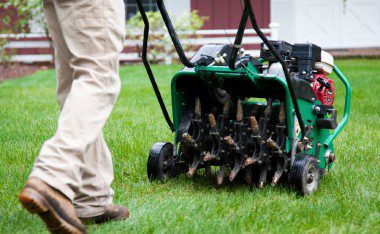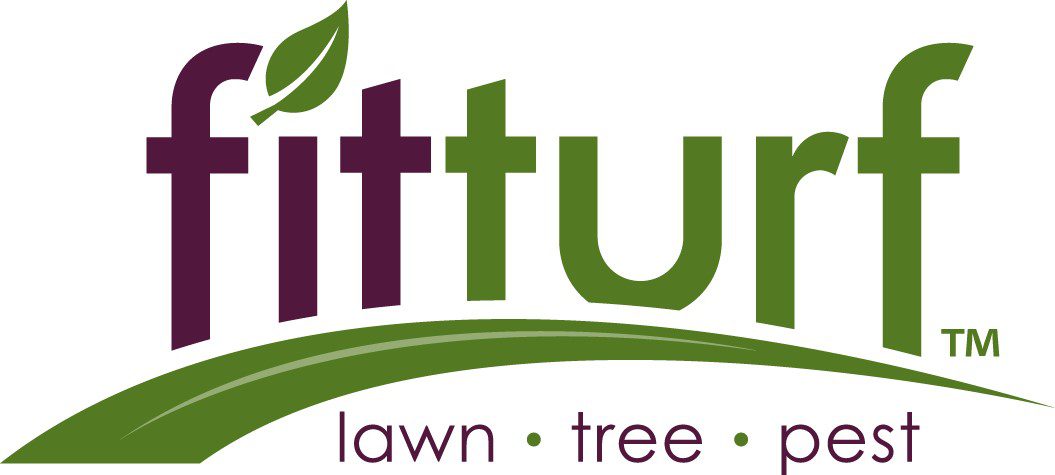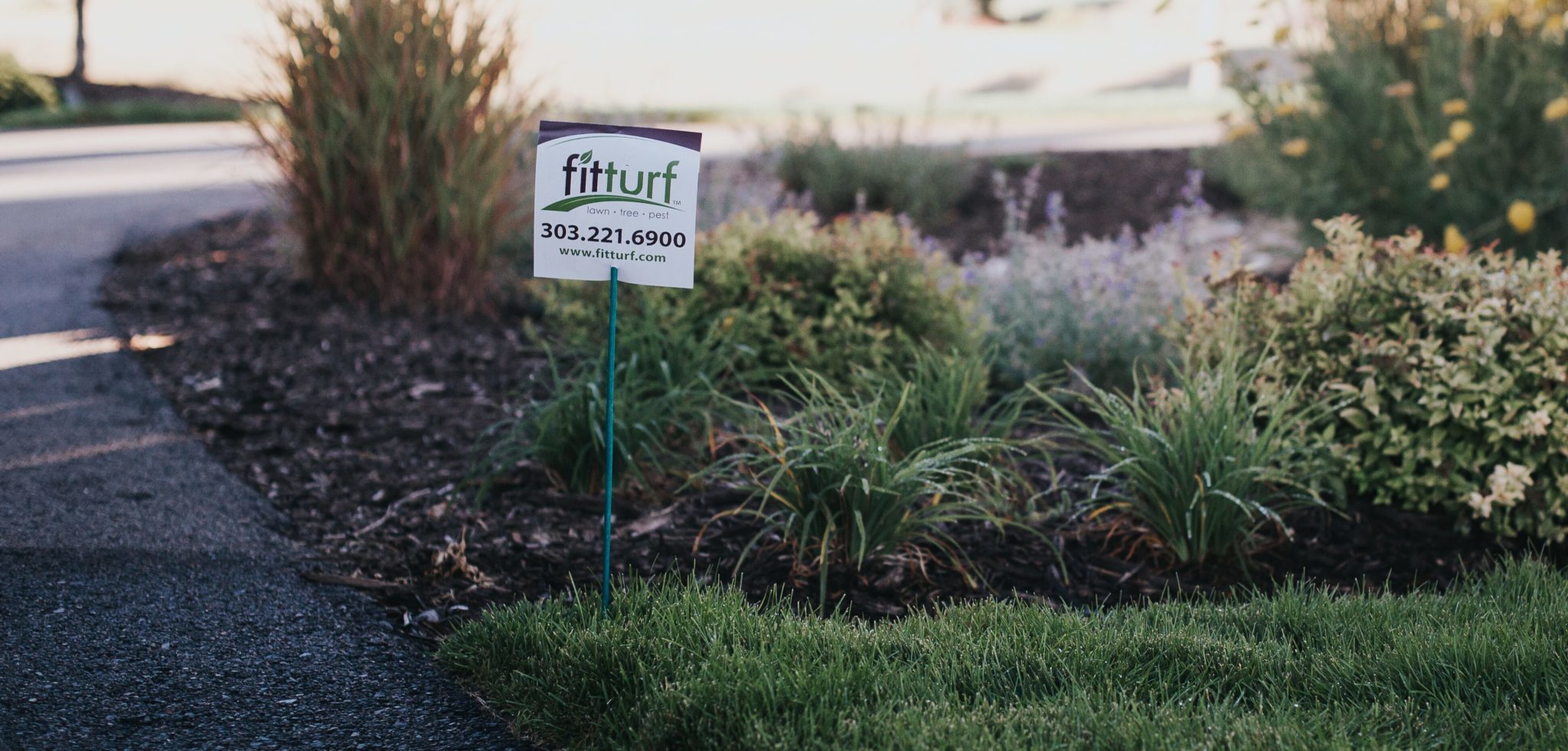CULTURAL PRACTICES: Steps to Achieve a Healthy Lawn
Cultural Practices
Proper Turf Care is the most useful method for managing disease, insects, and controlling the overall appearance of your lawn. Mowing, watering, fertilizing, and cultivating can be combined to reduce common turf problems, and produce a lush lawn.
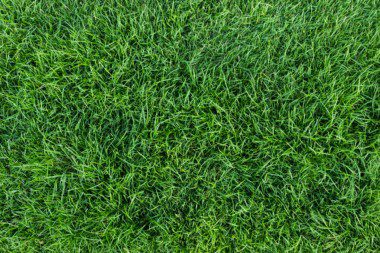
Fertilization
In order to have a healthy lawn, you’ll need high soil quality. Your soil supplies some of the nutrients that turf grass needs, but most soils are not able to provide all of them during the entire growing season. Fertilizer can help your lawn stay healthy, encourage leaf and root growth, increase resistance to drought and disease, reduce troublesome weeds, aid in recovering lost nutrients and help the lawn recover from numerous activities.
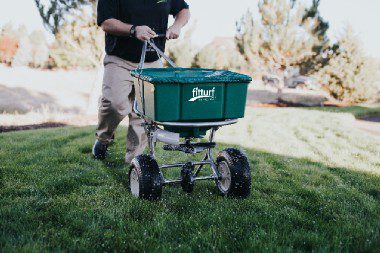
Mowing
Mowing is a vital cultural practice to all types of turf. Improper mowing can result in a reduction of water absorption to roots, a cessation of root growth, a reduction of carbohydrate production and storage, and can create entry points for disease development.
We recommend a setting your mower height to 3″. Only cut the top 1/3 of the grass blades at any one time, even if this means you have to mow again after several days. This is because longer grass blades can grow and support more roots and develop a deeper root system that is better able to find water and nutrients in the soil. Cutting too aggressively, forces grass plants to focus their energy on regrowing their blades, not deepening their roots. Mowing frequency depends on growth rate. In the spring, your lawn is growing faster, so you may need to mow every 3-4 days. When turf growth is slow, you may only need to mow every 7-10 days.
It’s recommended to mow a lawn in the early evening, when the lawn is usually dry and the sun not as intense. This allows gives the turf grass amble time to recover before the heat of a new day arrives.
For the cleanest cut, keep your mower blades sharp. Dull blades tear up grass, causing ragged, brown edges. Continuous use of a dull mower blade will also cause the lawn to weaken over time, making it more susceptible to stress from disease, insect damage and drought.
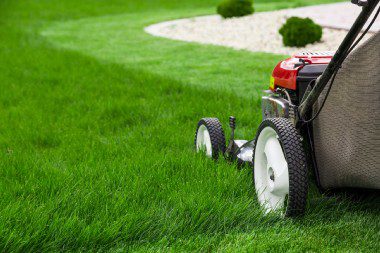
Watering
Q: HOW OFTEN SHOULD I WATER MY LAWN?
A: Water deeply and infrequently. Apply 1-1.5 inches of water per irrigation. Determine how long this takes by setting several shallow containers in different areas of the lawn for 30 minutes while irrigating. The average depth of water in these containers multiplied by two is the inches of water per hour emitted by the sprinkler system. Established lawns will require 2.5 inches of water or more per week. During the heat of summer, we recommend increasing this amount.
IMPORTANT: lawns grown on sandy soil require more frequent irrigation applications, with less water per application.
Q: WHEN IS THE BEST TIME TO WATER MY LAWN?
A: Water between 10pm and 6am
Q: HOW DO I KNOW IF MY SPRINKLER SYSTEM IS
WASTING WATER?
A: Get to know your system. Walk your system while it is running (yes, you’ll get a little wet) and look for breaks, leaks and obstructions. Fences, siding, driveways, and sidewalks don’t need water; check if these are wet after your system runs. Review your controller settings – anything more than 3 days a week is too much.
Q: I HAVE AN OLD SPRINKLER SYSTEM, WHAT SHOULD I DO?
A: Upgrade your equipment. Look for pressure-regulating, high-efficiency nozzles and heads. Consider a switch to drip systems, which are efficient, adaptable, and easy to install yourself. For $25-50, a new drip system can be hooked up to your outdoor spigot, or you can retrofit an existing spray or rotor zone. Finally, consider installing a smart controller, which adjusts your watering schedule based on plant type and weather. Bonus! You can easily manage the controller from your smartphone.
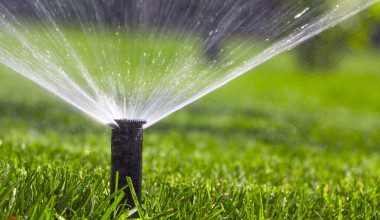
Thatch and Compaction Management
Thatch is a layer of dead and living plant tissue lying between the the grass and the root system, and the soil below. Thatch accumulation blocks air, water and nutrients from seeping down into the root system. A thick layer of thatch also decreases the lawns response to fertilizer, as well as promotes disease and insect infestation in the lawn. The formation of thatch over time is inevitable. Be sure to rake leaves in the fall to prevent further thatch build up, and again in the spring.
Soil Compaction occurs when soil particles are pressed together, reducing pore space between them. Compacted soil has a reduced rate of both water infiltration and drainage, creating a decline in root growth and shoot growth in the turf, and often leaves the lawn with bare areas. This may occur as a result of a high-traffic area on the lawn, such as children and dogs playing, from workers on your property for home improvement, etc.
Annual Aeration and Over-Seeding involved closed-hollow tines that penetrate the soil and remove the soil core at the turf surface. Is it the single most important management tool for controlling soil compaction and thatch, allowing for increased root growth within holes, and shoot growth atop holes. It also improves the lawns response to fertilizer, and the decreases the risk of turf disease.
